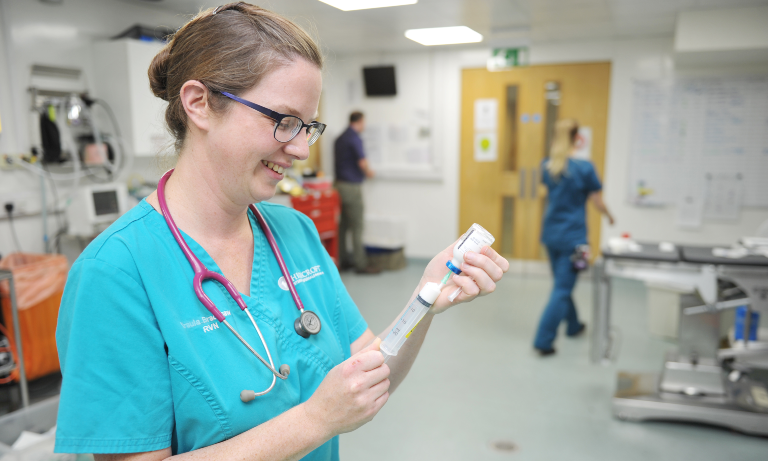The veterinary voice for animal welfare: reflecting on BVA’s updated Animal Welfare Strategy
11 Jul 2025
28 May 2025 | Steph Worsley
For Veterinary Nursing Awareness Month 2025, Steph Worsley RVN provides an insight into the important role of registered veterinary nurses (RVNs) who deliver skilled and compassionate nursing care to patients, ensuring that pets are in the best hands during any visit or stay at a vet practice.

Vet teams will fully understand that the thought of a much-loved pet undergoing an anaesthetic for a surgical procedure, even routine elective surgeries, can be stressful or worrying for owners. In this step-by-step account, I take you through my experience as an RVN caring for one of our patients throughout a spay procedure.
Early morning in practice
Grizabella the domestic shorthair cat is visiting the practice to be spayed. As an RVN, I will be supporting the veterinary surgeon in her care throughout the whole day, from admission to discharge.
When the client and Grizabella arrive at the surgery, the history and consent form are checked and I call the client into the room and introduce myself. I go through the procedure to ensure the client is fully informed of what will happen and able to provide their consent. I then examine Grizabella to check her weight, heart rate, respiration rate and temperature. With the checks complete, I work through the consent form ensuring we have all the relevant information, this is then signed by the owner, and I take Grizabella into the cattery.
Preparing for surgery
With Grizabella resting in the cattery, I work out her medication based on our standard operating procedure. The medications we use for cats are all set doses, which allows both RVNs and student veterinary nurses (SVNs) to administer these to induce anaesthesia safely.
Working alongside one of our SVNs, we administer the anaesthetic once checked by the vet. Grizabella is then returned into her kennel, covered with a blanket to keep her warm, and checked regularly while she falls asleep.
In the theatre
Once Grizabella is under anaesthesia, I bring her into the prep area. I place an intravenous cannula and intubate her to ensure her airway is secure during the procedure. She is then attached to the anaesthetic machine to administer oxygen and gaseous anaesthetic.
I take care to ensure she is breathing and stable under the anaesthetic, attaching her to monitoring equipment which monitors temperature, blood pressure, capnography (how much carbon dioxide she is breathing out) and oxygen levels. While I’m setting this up and recording the values on our anaesthetic records, our SVN is shaving the surgical site and cleaning the area.
Grizabella is then transferred to theatre. I continue to closely monitor her heart rate and breathing rate, as well as the previously mentioned parameters, and record these every five minutes throughout Grizabella’s anaesthetic. If I have any concerns during the operation, I communicate with the operating vet immediately.
Post-op
Once the vet has finished the procedure, I clean the area and ensure it is dry. The anaesthetic is turned off, and I administer a reversal agent to help her wake up. As Grizabella begins to stir, I gently remove the endotracheal tube, place on her body suit, and return her back into her kennel.
She’s covered with a blanket to ensure she stays warm during her recovery, and checked on every 10 minutes by an RVN or SVN until she’s moving round her kennel. At this point, she’s offered a small amount of food and given water and a litter tray.
Home time
With Grizabella awake and stable, we contact the client to let them know she's awake from her procedure and arrange a time for them to collect her. We continually check her throughout the day to ensure she is happy and well recovered. I then remove her IV cannula and give her another check over.
When the client arrives for the discharge appointment, I carefully discuss with them the post-operative care and medications, prior to bringing her through. I then get the pleasure of reuniting Grizabella with her owners and book a post-operative check, to be carried out at a later date by a veterinary nurse.
Get tailored news in your inbox and online, plus access to our journals, resources and support services, join the BVA.
Join Us Today